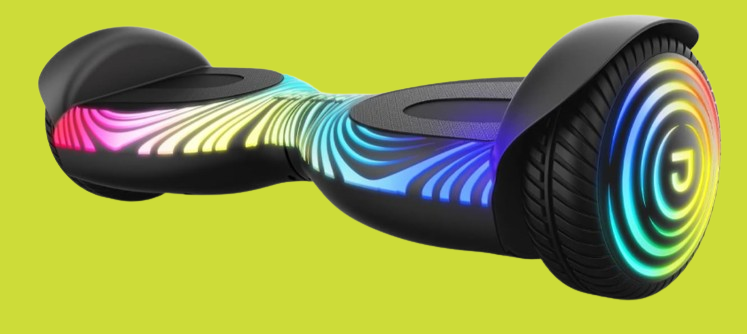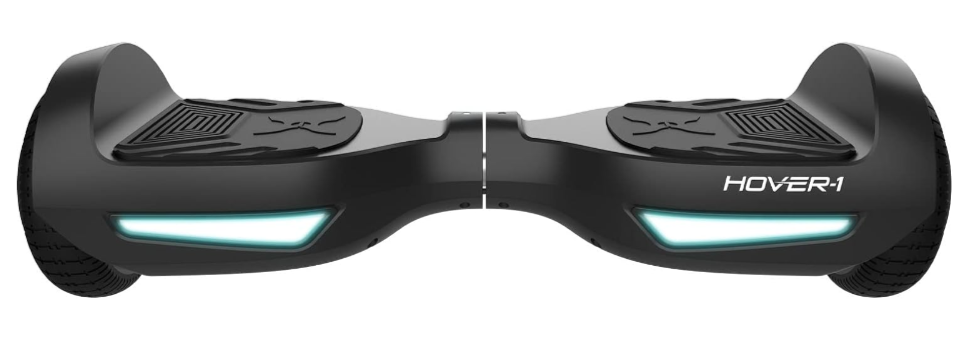If you’re going to buy a hoverboard for the first time for yourself or for your kids, you must know how fast it can go to buy a perfect and safe equipment for use. Buckle up, because this guide will unveil the world of hoverboard speeds in kilometers per hour (km/h).
The Ultimate Guide to Hoverboard Speed
Hoverboards are latest scientific dicoveries that come in variety of speeds, loads and power. These self-balancing devices offer great help to let you explore the world around on this device.
Everyone including men, women and kids can ride the hoverboard and quench their thirst for adventure. However, the speed and velocity depends on a variety of factors such as:
- Power of Motors
- Weight capacity of rider
- Wheels’ size
- Surface
All the above factors directly or indirectly influence the speed of a hoverboard. Higher power of motors will definately means higher speed of a hoverboard. The size of a wheel is an influential contributor in the speed as they better manage the road resistance and handle weight.
Hoverboards have limited weight capacity which means the lighter weight results in better speed. So, these factors must be considered when buying a hoverboard for yourself or your kid.
If you search for a hoverboard in the market, you’ll come to know that companies have made hoverboards for people of different age groups and users as well. Different models and brands of hoverboard gives you different speed ranges.

How Fast Can Hoverboard Go in Kilometers?
Hoverboards made for beginners which are mostly suitable for kids have 6 to 8 km/h. Mid-range hoverboard with good traction control and speed gives 9 to 12 km/h speed and suitable for adventure seekers who want to experience thrilling ride.
Some companies have really made demons in terms of speed and velocity that come with big wheels and powerful motors, they can move with a speed of 13 to 15 km/h to give an experience out of this world. However, finding the best and cheapest hoverboard is really a big deal for users.
Entry-Level Hoverboards: Steady and Stable
For those new to the hoverboard experience, the entry-level models often max out at around 10-13 km/h. These devices prioritize stability and ease of use, making them an excellent choice for beginners or younger riders.
“Entry-level hoverboards usually max out at around 6-8 mph, ideal for beginners or younger users.”
This translates to a top speed of approximately 10-13 km/h, providing a comfortable and controlled riding experience for those still mastering the art of hoverboarding.
Advanced Hoverboards: Pushing the Boundaries
As hoverboard technology has advanced, so too have the speed capabilities of these devices. The latest and greatest hoverboard models are capable of reaching speeds up to 24 km/h, catering to the needs of more experienced riders and those seeking an adrenaline-fueled commute.
“While more advanced models can push the limits up to 10-15 mph [16-24 km/h], ideal for urban commuters or thrill-seekers.”
These lightning-fast hoverboards are designed with powerful motors, advanced stabilization systems, and durable construction, allowing riders to navigate city streets, conquer hills, and experience the pure exhilaration of hoverboard travel.

5 Fastest Hoverboard’s Model With Tested Speed
- Hover-1: 7MPH (11.26 km/h)
- Gyroor Hoverboard G13: 7.5 MPH (12.07 km/h)
- TOMOLOO Hoverboard: 7.5 MPH (12 km/h)
- Jetson J Beat: 10 MPH (16.09 km/h)
- Jetson Flash: 11 MPH (16.59 km/h)
The Future of Hoverboard Speed: Limitless Possibilities
As hoverboard technology continues to evolve, the possibilities for even faster and more advanced models are endless. With ongoing advancements in motor efficiency, battery life, and stabilization systems, the potential top speeds of hoverboards are poised to reach new heights, offering riders an increasingly thrilling and efficient mode of personal transportation.
Whether you’re a speed-hungry commuter or a thrill-seeking adventurer, the world of hoverboards is quickly becoming a realm where the boundaries of possibility are continuously being pushed. So strap on your safety gear, step onto the platform, and get ready to experience the future of personal mobility at its fastest.
The Allure and Danger of Hoverboard Thrills
In the fast-paced world of consumer tech, few products have captured the public’s imagination quite like the hoverboard. These self-balancing scooters, which allow users to glide effortlessly across surfaces, have become a ubiquitous sight on city streets and in suburban neighborhoods. But as the thrill-seeking public clamors for ever-faster and more powerful models, a growing chorus of safety concerns has emerged.
The core appeal of hoverboards lies in the sense of freedom and exhilaration they provide. Carving through urban landscapes or gliding effortlessly over smooth surfaces taps into a primal human desire for speed and agility. But this thrill comes at a cost, as high-powered hoverboards introduce a host of safety risks that consumers must carefully weigh.
The Risks of High-Speed Hoverboarding
Chief among the concerns are the potential for crashes, falls, and injuries. As hoverboard speeds have increased, so too have the consequences of losing control. Riders can be thrown from the device at high velocities, leading to devastating impacts with the ground or surrounding objects.
“According to the Consumer Product Safety Commission (CPSC), there were 77,200 injuries related to micromobility vehicles (e-scooters, e-bikes, or hoverboards) and 48 deaths between 2017 and 2021 . Sixty-eight percent of the deaths were caused by e-scooters rather than hoverboards, but self-balancing scooters still led to some deaths.”
These sobering statistics underscore the very real dangers associated with high-speed hoverboarding. Users must maintain constant vigilance, as a momentary lapse in concentration or loss of balance can have catastrophic consequences.
Beyond the physical risks, there are also concerns around battery safety and fire hazards. Poorly designed or manufactured hoverboards have been known to overheat, leading to battery explosions and dangerous blazes.
Look for loose screws, cracks, or any unusual wear. Keep an eye on the tires for proper inflation and check the footpads for any signs of damage. Clean your hoverboard regularly, especially after dusty or dirty rides. Use a soft cloth to wipe down the surface and a gentle brush for the wheels and crevices.
Diligent maintenance and careful inspection of hoverboard components are essential to mitigate these fire risks. Consumers must also be vigilant in ensuring their devices are compliant with safety standards and have not been subject to any recalls.
Balancing the Rewards and Risks
While the thrills of high-speed hoverboarding are undeniable, the dangers cannot be ignored. Responsible riders must weigh the potential for exhilaration against the very real risks of serious injury or worse.
For those drawn to the allure of hoverboard speed and agility, the key lies in striking a careful balance. Strict adherence to safety protocols, such as wearing appropriate protective gear and maintaining one’s equipment, can help minimize the hazards. Riders should also consider limiting their top speeds and exercising caution in high-traffic or uneven environments.
Ultimately, the decision to engage in high-speed hoverboarding rests with the individual. But by understanding the risks and taking proactive steps to mitigate them, consumers can maximize the rewards while minimizing the dangers of this thrilling mode of transportation.
